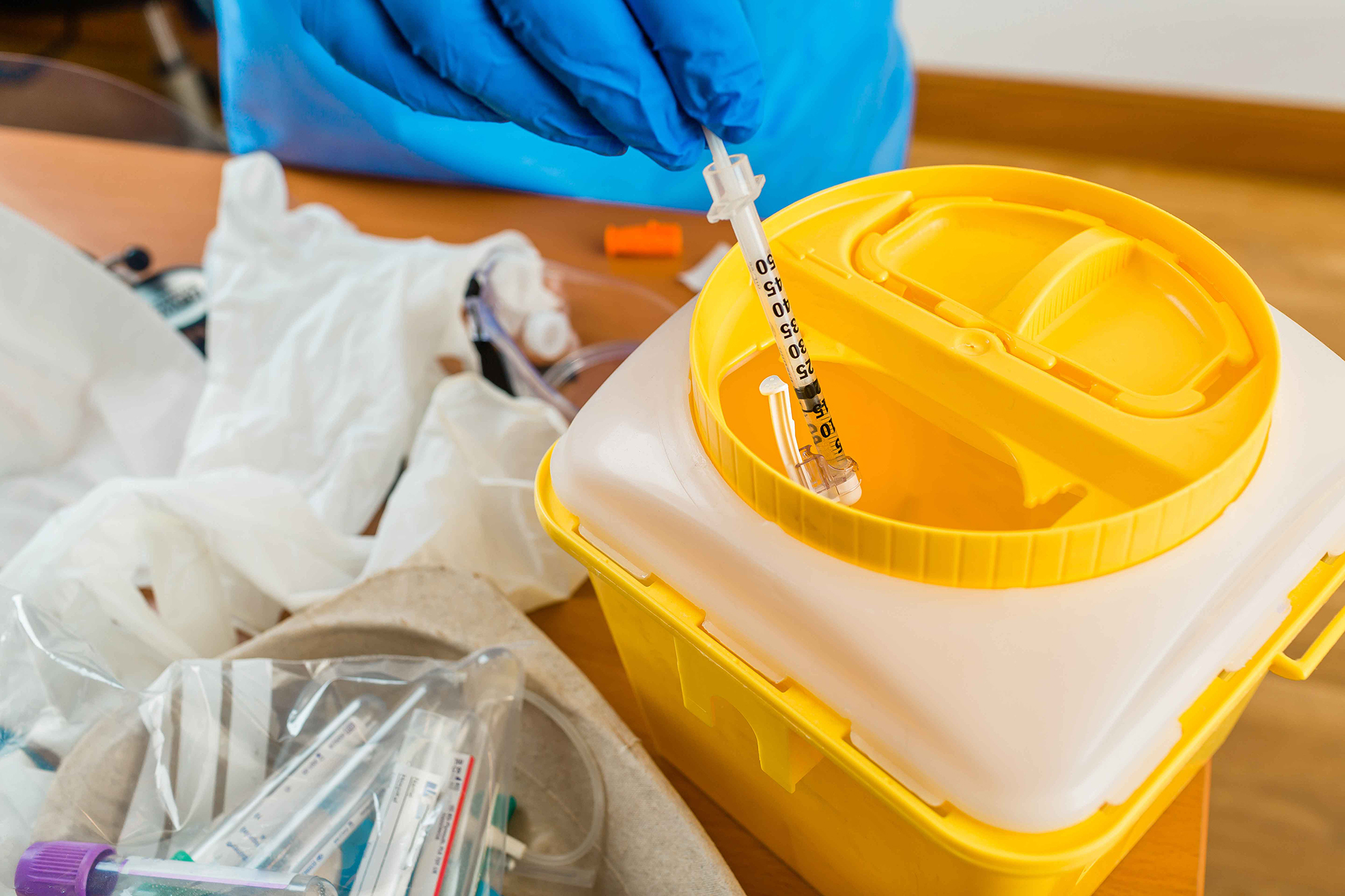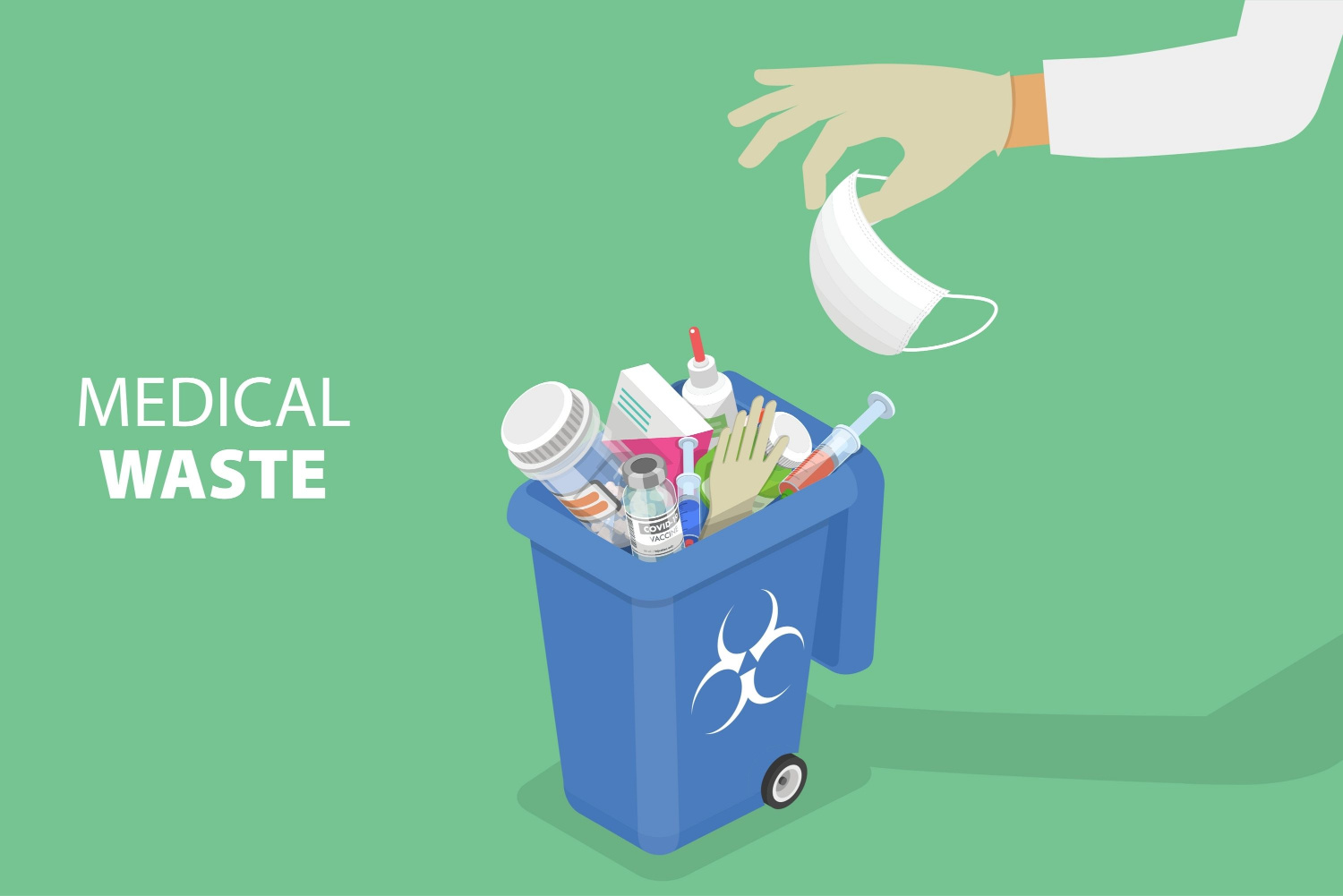Strategic Medical Waste Disposal Solutions: Promoting Security and Sustainability
Wiki Article
Conformity and Laws for Medical Waste Disposal
Compliance and guidelines for medical waste disposal play an essential role in making sure the security and health of both medical care specialists and the general public. Correct administration of clinical waste is vital to prevent the spread of infections, secure the environment, and preserve public wellness. This needs adherence to specific guidelines and methods set forth by governing agencies and bodies. These guidelines encompass different facets, consisting of the category and segregation of clinical waste, proper storage space and dealing with treatments, along with transportation and disposal techniques. By following these guidelines, healthcare facilities can decrease the threat of contamination and possible harm to individuals and the setting. This article will discover the value of conformity and offer a summary of the essential laws regulating clinical waste disposal.Importance of Conformity
The value of conformity with laws for medical waste disposal can not be overstated. Proper disposal of medical waste is important for ensuring the safety and health of medical care employees, patients, and the public. Clinical waste, that includes things such as made use of needles, contaminated gloves, and biomedical waste, can posture serious health and wellness threats if not dealt with and taken care of properly.Compliance with regulations makes sure that clinical waste is managed in such a way that minimizes the potential for direct exposure to unsafe materials and transmittable illness - medical waste disposal service. It aids stop the spread of infections, such as HIV, hepatitis B and C, and various other bloodborne microorganisms. Compliance likewise plays an important duty in safeguarding the setting by avoiding contamination of water resources, soil, and air
Failure to adhere to guidelines can result in severe effects for healthcare facilities, consisting of fines, lawsuit, and damage to their track record. Additionally, non-compliance may endanger the health and security of healthcare employees, people, and the neighborhood.
Conformity with policies for clinical garbage disposal requires adherence to certain standards and methods. These might consist of appropriate segregation, product packaging, labeling, and storage of medical waste. It also involves utilizing accepted disposal methods, such as landfilling, autoclaving, or incineration, depending upon the sort of waste.
Governing Agencies and Bodies
Regulatory companies and bodies play a crucial role in supervising conformity with policies for clinical garbage disposal. These companies are responsible for setting protocols, guidelines, and criteria to ensure the safe and proper handling of medical waste. They enforce and monitor compliance to protect public health and the environment.One of the most prominent regulatory firms in the USA is the Environmental Defense Firm (EPA) The EPA is liable for managing the storage, transportation, treatment, and disposal of clinical waste. They develop guidelines for waste generators, carriers, and therapy centers to adhere to, ensuring that all required precautions are taken to stop the spread of diseases and contamination.
An additional crucial regulatory body is the Occupational Security and Health And Wellness Management (OSHA) OSHA sets criteria and laws to protect workers from occupational threats, including those relevant to clinical waste. WasteX Medical Waste Disposal. They supply guidelines for the risk-free handling and disposal of clinical waste to safeguard employees in health care centers
In addition to these government agencies, private states additionally have their own regulative bodies that oversee medical garbage disposal. These firms may have their very own particular laws and requirements that need to be followed.

Classification and Partition of Clinical Waste
To guarantee correct monitoring of medical waste, it is necessary to identify and segregate it according to established methods and standards. medical waste disposal. Category and partition play a crucial function in lessening the threat of infection, shielding the environment, and making sure the safety of health care employees and the publicClinical waste is identified right into various categories based on its potential risk level. These classifications consist of infectious waste, pathological waste, sharps waste, pharmaceutical waste, chemical waste, and radioactive waste. Each category needs certain handling, transport, disposal, and storage approaches to decrease the threat of direct exposure and contamination.
Partition of clinical waste entails separating various sorts of waste at the resource. This procedure makes certain that waste with various danger degrees is not blended, lowering the potential for cross-contamination and making disposal treatments a lot more effective. Appropriate segregation is achieved via making use of color-coded labels and containers, which help healthcare employees and waste monitoring workers take care of each kind and identify of waste correctly.
In enhancement to category and segregation, medical care centers should also follow neighborhood, state, and federal regulations regarding clinical waste management. useful content These laws detail particular requirements for storage space, transportation, therapy, and final disposal of clinical waste, making sure compliance and keeping public health and wellness and safety.
Correct Storage and Handling Treatments
Appropriate storage and taking care of treatments play an important function in ensuring the secure and certified administration of medical waste. Clinical waste, which consists of items such as made use of syringes, polluted handwear covers, and ended medications, can present major health and ecological risks otherwise dealt with appropriately. It is essential for medical care centers and other generators of medical waste to implement strict storage and dealing with procedures.
To start with, medical waste must be saved in resilient, watertight containers that are particularly developed for this purpose. These containers need to be labeled with the universal biohazard sign and the words "clinical waste" to clearly suggest the components. Furthermore, the containers need to be maintained safely near prevent any kind of prospective leakage or spillage.
Additionally, it is necessary to set apart various sorts of clinical waste to protect against cross-contamination. Sharps, such as scalpels and needles, ought to be stored in puncture-resistant containers to minimize the threat of injuries - WasteX Medical Waste Disposal. Chemical waste, such as solvents and anti-bacterials, need to be kept independently from various other types of medical waste to avoid dangerous exposures or chemical reactions

Transport and Disposal Approaches
Medical care centers should ensure the secure transportation and proper disposal of their clinical waste to comply with laws and protect public health. Transport and disposal approaches play a vital duty in stopping the spread of contagious illness and lessening the ecological influence of medical waste.
To transport clinical waste, medical care centers should make use of puncture-resistant and leak-proof containers that are identified with the biohazard icon. These containers should be firmly sealed to avoid any kind of leak throughout transportation. In addition, medical care facilities need to establish protocols for the transportation procedure, consisting of using dedicated vehicles and skilled personnel.
As soon as the medical waste reaches the disposal center, it undergoes various methods of therapy. One common method is incineration, which includes burning the waste at high temperatures to damage virus and lower the quantity of waste. An additional technique is autoclaving, which utilizes steam and stress to sanitize the waste. After treatment, the waste is usually sent out to a land fill or a waste-to-energy center for final disposal.
It is crucial for healthcare centers to work with certified and allowed waste administration companies to guarantee proper transportation and disposal of clinical waste. These companies have the expertise and sources to manage clinical waste safely and in conformity with policies.
Verdict
In conclusion, conformity with regulations for medical waste disposal is of utmost importance to make certain public health and safety and security. Generally, adherence to conformity and policies is necessary to efficiently handle medical waste.Clinical waste, which includes products such as used needles, contaminated handwear covers, and biomedical waste, can pose significant wellness threats if not managed and disposed of properly.
These groups include transmittable waste, pathological waste, sharps waste, pharmaceutical waste, chemical waste, and radioactive waste.Segregation of medical waste involves dividing different types of waste at the source. Proper segregation is accomplished via the usage of color-coded labels and containers, which aid health care workers and waste management personnel identify and handle each type of waste appropriately.
Chemical waste, such as anti-bacterials and solvents, ought to be kept independently from various other types of medical waste to avoid hazardous direct exposures or chemical reactions.
Report this wiki page